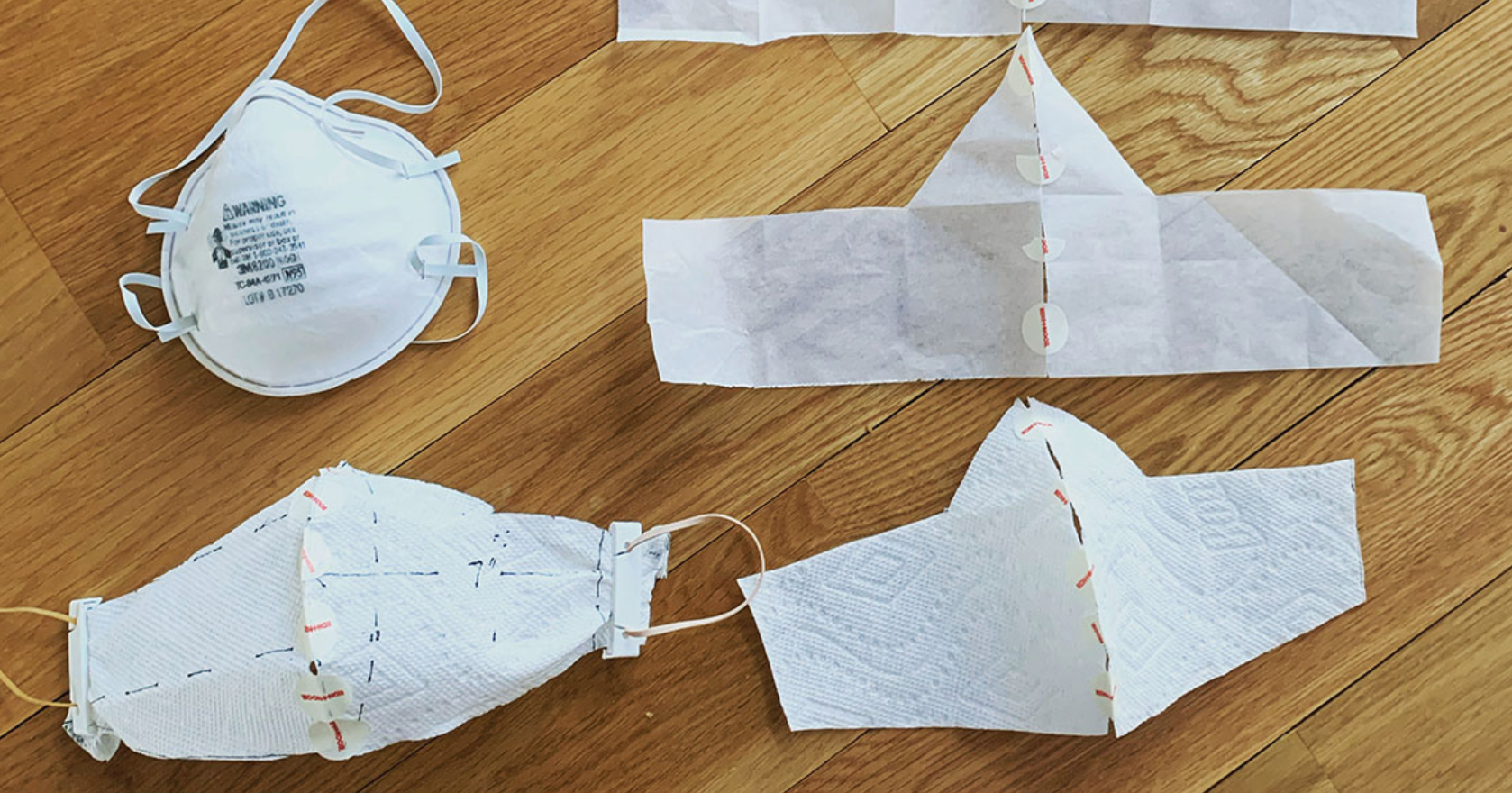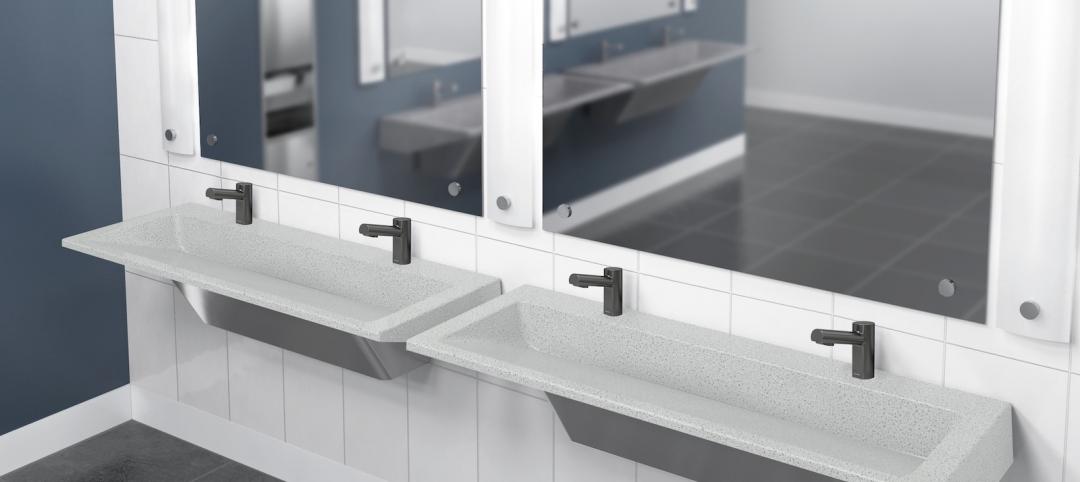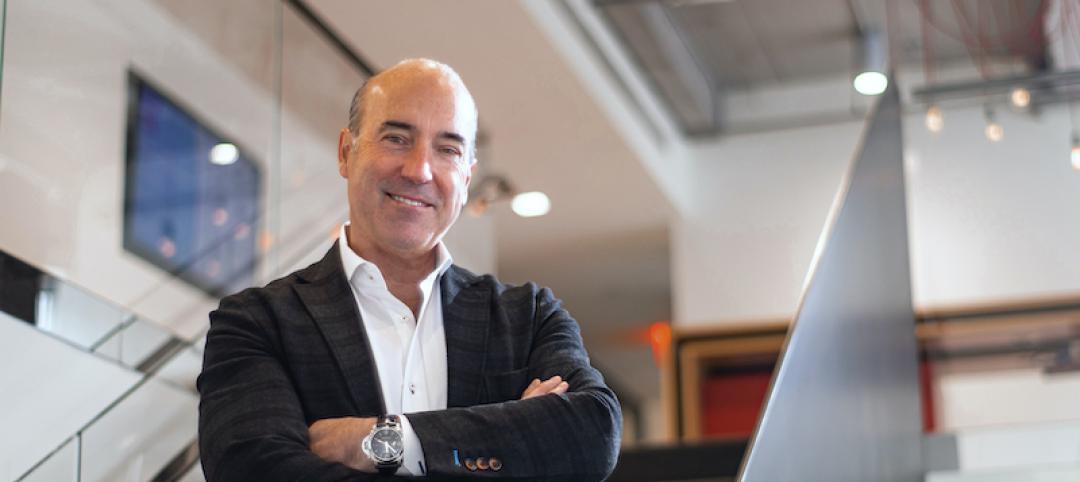CannonDesign has formed a new coalition of designers and makers working to create urgently needed protective masks for healthcare workers on the front line of the COVID-19 crisis.
The team is ideating a better do-it-yourself mask that will be able to be produced efficiently to help meet the urgent need. Initial partners include SUNY Buffalo, materialsIn, Oxford Pennant, Stitch Buffalo, and The Factory Buffalo. The toymaker Fisher Price is also supporting the initiative.
Other designers and makers interested in collaborating can reach out via this form.
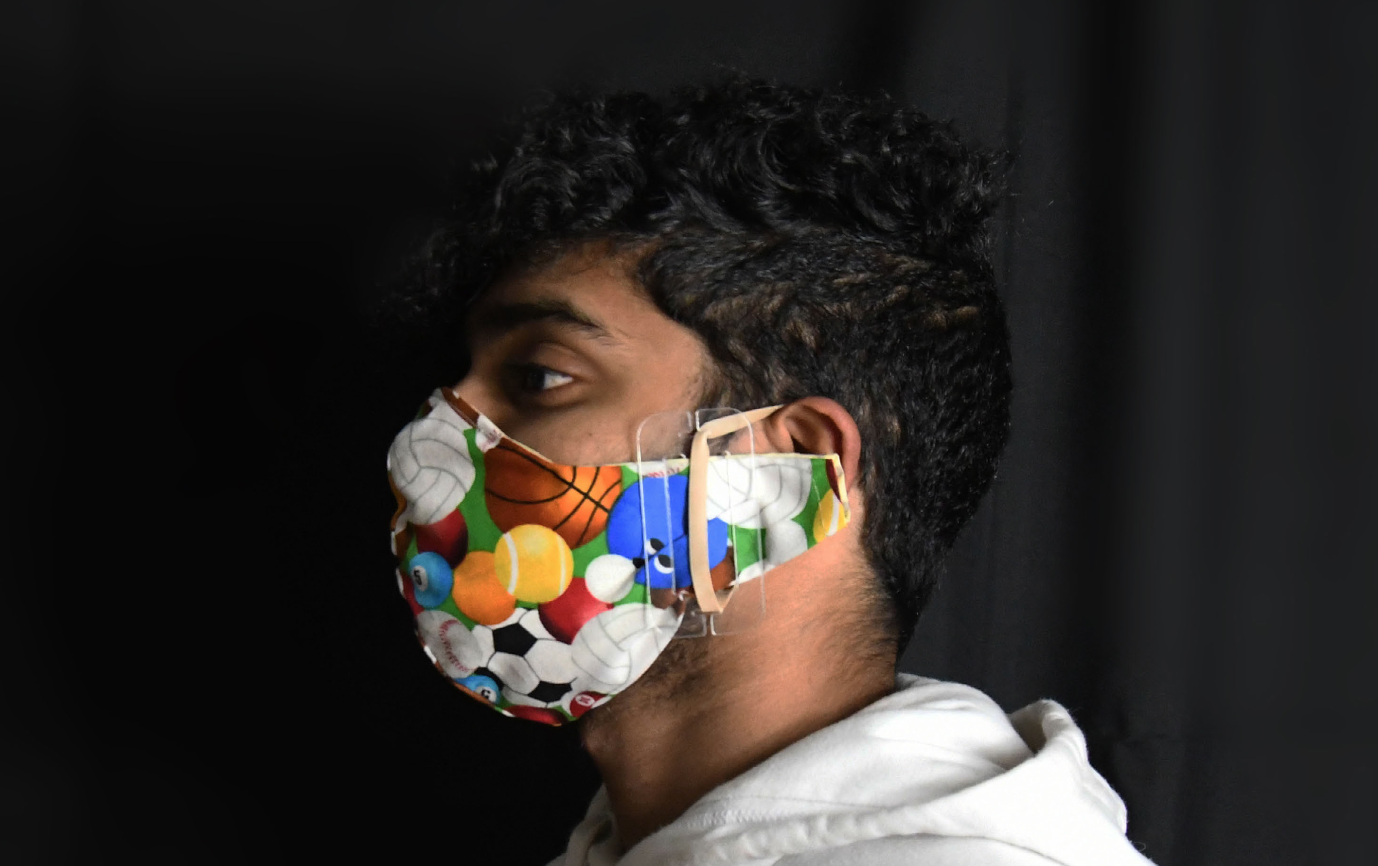 Slide clip design prototype.
Slide clip design prototype.
The team is developing working prototypes. Once the prototypes are developed, these masks can be used by those on the front line of the COVID-19 crisis, or by health workers in lower acuity environments, which would free up the regulated N-95 makes for those on the front lines.
The collaborative team will create these masks through key steps, including:
- Establishing a “patternless-pattern” sewists can replicate efficiently
- Using 3D-printed clips or rubber bands to eliminate elastics or ties from the design
- Connecting experts to makers to share best practices and guidelines
- Building local networks and streamlined paths to get masks from makers to healthcare workers
The coalition expects to ship its first large batch of masks to Evergreen Health Services, Buffalo, by Friday, April 3, 2020. Clinical beta testing will be conducted over the weekend, and the team expects to begin ramping up production starting the week of April 6.
BUT THE QUESTION REMAINS: ARE HOMEMADE MASKS REALLY EFFECTIVE AGAINST CORONAVIRUS?
There is some question whether such homemade face masks actually work—that is, do they really protect healthcare workers, COVID-19 patients, or the public?
CannonDesign Principal Michael Tunkey, AIA, addressed this question in a recent blog in which he acknowledged that the “topline scientific conclusion” is that homemade cloth masks “do very little” to stop the novel cororavirus, and that the “real solution” is to ramp up production of N95 masks and other personal protective equipment.
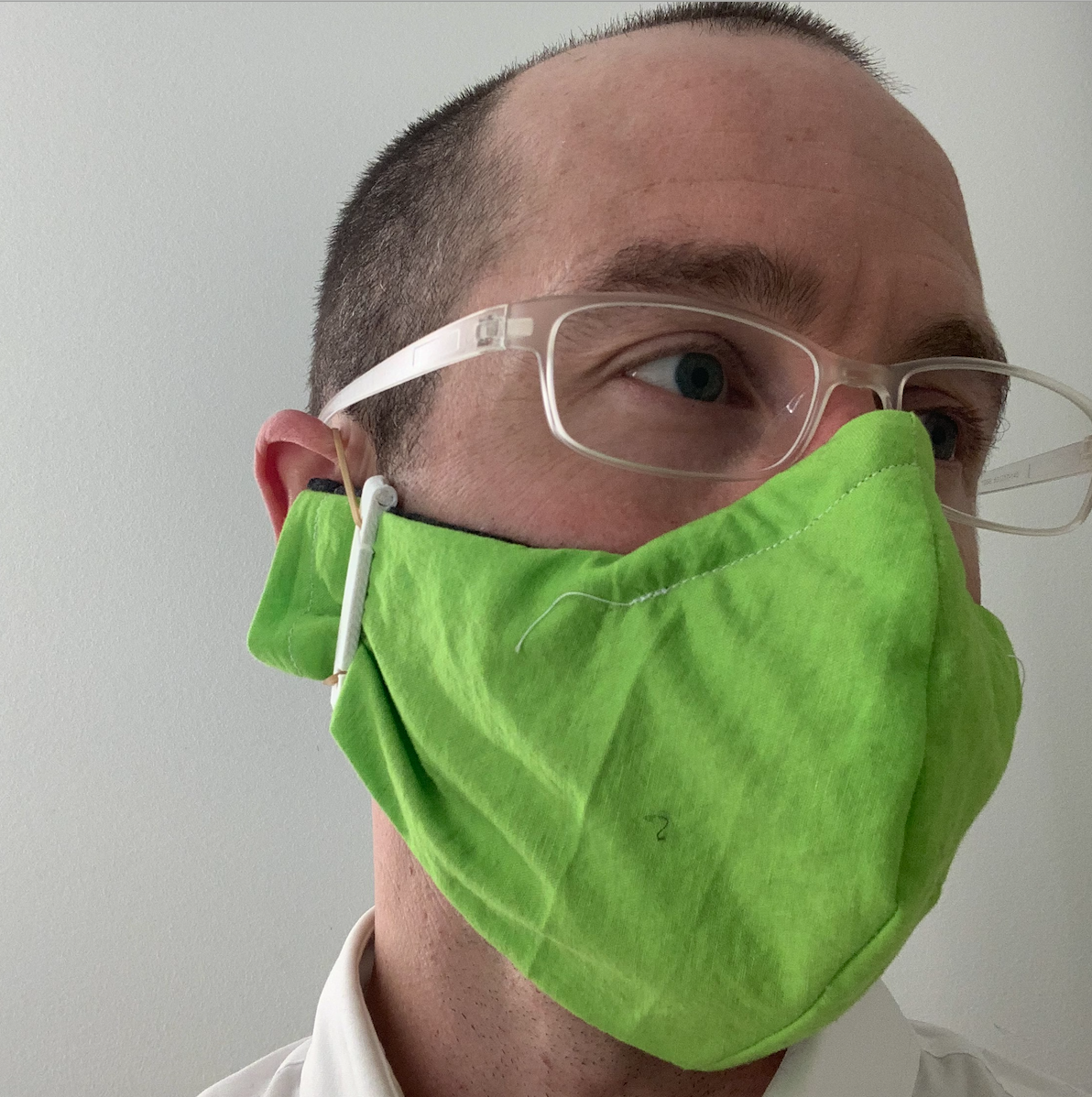 Michael Tunkey wearing DIY prototype face mask.
Michael Tunkey wearing DIY prototype face mask.
But DIY masks can do some good and have a positive impact, Tunkey concludes. His rationale:
- Call them “cloth N95 protectors.” Many healthcare workers are being forced to wear their limited supply of N95 masks for an entire shift, he notes. A properly made DIY face mask that follows the “bra cup” shape can fit snugly over an N95 mask, thereby extending the life of the N95 masks in the field.
- Leave room for a HEPA filter. A well-designed cloth face mask has some type of wire nose closure and an open pocket to insert something like a HEPA filter, although, he says, “the material most effective to use in these pockets is still murky.” Until that murkiness is cleared up by “the experts” (where are we when we need you, Dr. Fauci?), DIYers should follow this best practice.
- DIY face masks might keep your sneeze in. Tunkey acknowledges that cloth masks are “pretty ineffective” at stopping airborne particles, but states that they might help when worn by infected persons, especially the many who don’t know they are infected.
Tunkey’s bottom line on DIY face masks: “Keep sewing,” but try to connect with a community of experts who can advise you on current best practices for mask design, protocols for infection control, the needs of the local healthcare community, and the logistics of delivery.
Related Stories
K-12 Schools | Nov 30, 2022
School districts are prioritizing federal funds for air filtration, HVAC upgrades
U.S. school districts are widely planning to use funds from last year’s American Rescue Plan (ARP) to upgrade or improve air filtration and heating/cooling systems, according to a report from the Center for Green Schools at the U.S. Green Building Council. The report, “School Facilities Funding in the Pandemic,” says air filtration and HVAC upgrades are the top facility improvement choice for the 5,004 school districts included in the analysis.
Giants 400 | Nov 14, 2022
4 emerging trends from BD+C's 2022 Giants 400 Report
Regenerative design, cognitive health, and jobsite robotics highlight the top trends from the 519 design and construction firms that participated in BD+C's 2022 Giants 400 Report.
Healthcare Facilities | Jun 20, 2022
Is telehealth finally mainstream?
After more than a century of development, telehealth has become a standard alternative for many types of care.
Coronavirus | May 20, 2022
Center for Green Schools says U.S. schools need more support to fight COVID-19
The Center for Green Schools at the U.S. Green Building Council released a new report detailing how school districts around the country have managed air quality within their buildings during the second year of the COVID-19 pandemic.
Industry Research | Mar 9, 2022
Survey reveals five ways COVID-19 changed Americans’ impressions of public restrooms and facilities
Upon entering the third year of the pandemic, Americans are not only more sensitive to germs in public restrooms, they now hold higher standards for the cleanliness, condition and technology used in these shared spaces, according to the annual Healthy Handwashing Survey™ from Bradley Corporation conducted in January.
Codes and Standards | Feb 21, 2022
New standard for ultraviolet germicidal irradiation
The Illuminating Engineering Society (IES) recently introduced the standard, ANSI/IES RP-44-21 Recommended Practice: Ultraviolet Germicidal Irradiation.
Coronavirus | Jan 20, 2022
Advances and challenges in improving indoor air quality in commercial buildings
Michael Dreidger, CEO of IAQ tech startup Airsset speaks with BD+C's John Caulfield about how building owners and property managers can improve their buildings' air quality.
Coronavirus | Jul 20, 2021
5 leadership lessons for a post-pandemic world from Shawmut CEO Les Hiscoe
Les Hiscoe, PE, CEO of Shawmut, a $1.5 billion construction management company headquartered in Boston, offers a 5-point plan for dealing with the Covid pandemic.
Resiliency | Jul 15, 2021
A new report urges federal investment in healthier buildings
The National Institute of Building Sciences also calls for code changes and greater cooperation between building owners and the AEC community.
Multifamily Housing | Jul 7, 2021
Make sure to get your multifamily amenities mix right
One of the hardest decisions multifamily developers and their design teams have to make is what mix of amenities they’re going to put into each project. A lot of squiggly factors go into that decision: the type of community, the geographic market, local recreation preferences, climate/weather conditions, physical parameters, and of course the budget. The permutations are mind-boggling.


